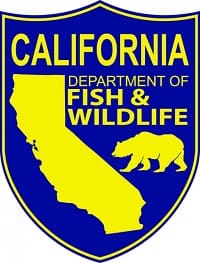California Black Bear Study Underway Along Central Coast

Scientists Splitting Hairs to Estimate Population and Breeding Patterns
The California Department of Fish and Wildlife (CDFW) is conducting a multi-year population study on black bears in San Luis Obispo and Monterey counties.
CDFW researchers are collecting bear hair this summer in San Luis Obispo County with non-invasive hair snags. DNA from the hair will be analyzed in a laboratory.
“With residential development encroaching further into bear habitat, it’s critical that we gain some scientific insight into California’s black bear population,” said CDFW state bear program coordinator, Marc Kenyon. “Understanding this expanding population will help us make informed planning decisions that are in the best interest of the bears.”
Samples are collected with hair snags: small barbwire corrals with non-consumable bait placed in the middle. As the bear passes through the wire to investigate the bait made from fermented fish and steer blood, the barbed wire gently pulls hair samples.
Scientists check and re-bait traps on a weekly basis, collecting hair specimens and sending them to the UC Davis Wildlife Genetics and Population Health Lab for testing and analysis.
“Extracting DNA from hair follicles allows us to identify unique individual profiles of bears, explore familial relations, breeding trends as well as gain insight into black bear movement patterns,” said UC Davis associate professor Holly Ernest.
Hair sampling is one of the most cost-effective and increasingly common methods of estimating abundance and density of bears on local scales. The method, known as capture–mark-recapture, is commonly used to estimate population sizes of wildlife, particularly when a complete head count is not possible.
Population size is estimated when a portion of the population is “captured” via a hair snag, “marked” by a DNA profile and “recaptured” when hair from the same animal is collected again. By evaluating the proportion of bears whose hair is collected repeatedly to the total number of bears sampled, scientists can estimate population size and identify general trends.
CDFW researchers plan to continue collecting hair samples into August and then will move operations north to Monterey County this fall.

